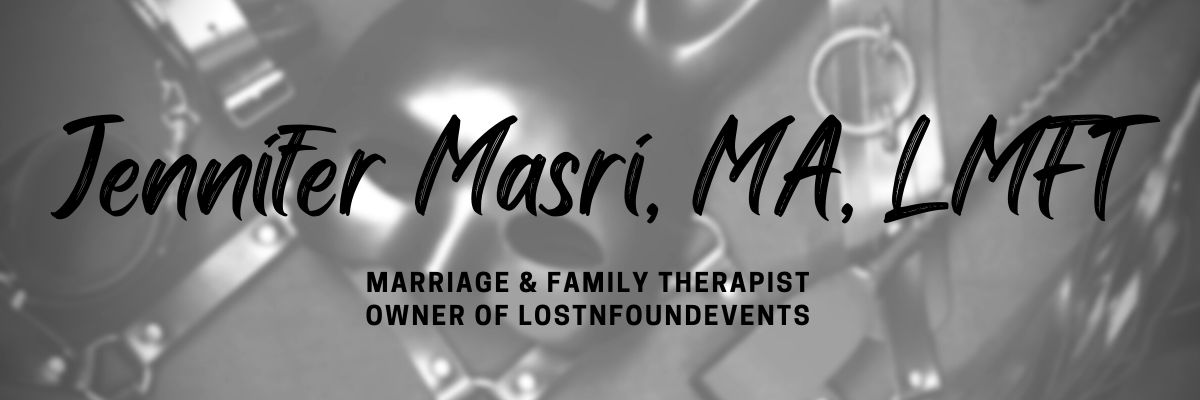SAFE, SANE, AND CONSENSUAL – we hear this all the time, but what does it mean? I want to take this opportunity to discuss a portion of this, which is the ‘consensual’ portion. One way to make sure that what you’re doing is consensual is to negotiate.
Negotiating tends to get easier the more you do it. In addition, as you play you will learn more about yourself including more things you need to include when you negotiate a scene. (Negotiating a relationship or D/s dynamic is a whole seperate article.)
The conundrum is that while you want to cover important things when you negotiate, you also don’t want to negotiate the scene to death. Many scenes are about an exchange of energy and may include elements that the top/D-type doesn’t want to necessarily devulge to the bottom/s-type. This is true especially for players that know each other well, are regular play partners, or in a dynamic/relationship. The negotiation I’m focusing on is the “newbie negotiation”. Assuming you are fairly new to kink or new to your partner, or both. Below is an easy way to remember what should be covered and descriptions for each element.
As I have been teaching the 101 series I have gone over what should be covered (in general) when negotiating play almost every week. I decided to come up with an easy to remember acronym. They are not necessarily in order of importance, but I had to make it into a “word”! lol
Negotiation Acronym: S.M.A.S.H.T.
An easy way to remember the basic things that should be covered in a negotiation for play.
S – Safewords
M – Medical
A – Aftercare
S – Soft Limits
H – Hard Limits
T – Triggers
Safewords – sometimes it’s not enough to just agree that the typical “stoplight” system be used. (Note: if you are using other safewords please also inform a Dungeon Monitor) “Green” means it’s all good and you are enjoying what’s happening. Most people don’t actually shout “green”! Although that may be kinda funny! Lol Usually giggles or moans are good indicators. “Red” is also pretty straightforward. It means you STOP. Stop whatever is happening and immediately check in with the bottom. I have found that people’s understanding or expectation of “yellow” can vary. It’s important to make sure you are on the same page. If the bottom expects the top to simply “lighten up” when they call yellow but the top assumes they should stop and check in (similar to a red with perhaps less urgency) – this may effect the bottoms head space. The bottom should tell the top during negotiation that, “if I call yellow it just means you’re going too hard but don’t stop and talk to me because it will interupt my head space.”
Medical – not just obvious things like surgeries, joint issues, injuries, etc, but also things like asthma, blood sugar issues, or allergies. Allergies can be food related but also if they have any allergy to natural fiber you may need to double think about the type of rope you’re using (if any) or if other toys have been stored with rope that can cause a reaction. Also if there are animal allergies and you have toys made with any kind of fur, etc.
Aftercare – this varies from person to person and possibly scene to scene with the same person. Some people enjoy close snuggling or putting their head in the tops lap while others may need some time alone or to not be touched. (side note – even if they ask to be left alone they should always be somewhere that you can keep an eye on them) Always have water at the ready for both parties and food may be desired as well. If you know you need to eat right after I suggest having something that you bring so that you are not relying on the club to have food once you’re done playing. Even just throwing a protien bar in your bag is a good back up.
Soft limits – this refers to limits that the bottom isn’t interested in or has concerns about, but are willing to try them or push. This may also include activities that the bottom knows they don’t like, however, is willing to do them from a place of service or submission.
Hard limits – limits that are a no go. Not happening. Nope.
Triggers – psychological or emotional responses that can effect the scene (usually negatively). Can be body positions, for example the bottom may be fine on a cross but if they are bent over furniture it makes them feel too vulnerable or exposed. It can also remind them of childhood punishments and cause a negative response. Verbal triggers, often in the use of humiliation and/or degredation play. The bottom my not be ok with any “negative” talk – only affirmations or positive feedback. They may also be ok with some types of humilation but not others. For example sexual humiliation is ok but don’t call them anything negative in reference to their intelligence or weight. Certain implements can trigger someone. Perhaps as a child they were always hit with a belt as punishment. For some they may seek out belts for impact due to this experience OR it may become a negative trigger/reminder. Particular parts of the body is something else to consider. You can have a bottom who is a heavy masochist that you can do almost anything to…..except don’t touch their feet! (for example) Maybe you have to stay away from face slapping due to it triggering memories of past abuse, or their stomach due to insecurities, etc.
All of the above should be discussed with concern for both parties. The top may have medical issues or triggers that the bottom should be aware of, both should be on the same page as far as safewords and limits, and the top may have their own requests for aftercare!
Also, make sure you understand the intention of the scene. I know two people that did a full negotiation – listed all the things they both liked – then as they began, realized they BOTH assumed they were the Top! Decide together if this is more of a casual, teaching scene. Perhaps one or both of you are looking for experience but not necessarily power exchange. Do you want it to have a certain energy? Energy of the scene isn’t always something you can control, and in my opinion it’s usually best when you don’t try to, however, if one person is looking for a very sensual energy and the other desires a more strict and disciplined energy that’s good to know up front.
You may need to add to this depending on the type of play or intensity of the scene – but this should cover all your basics.
I hope this helps!

